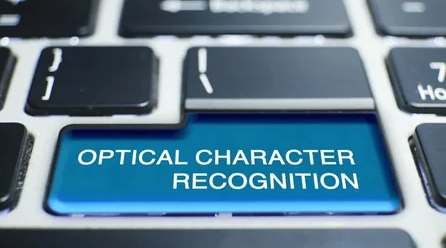Complete Guide on Optical Character Recognition
In today’s fast-paced digital world, technology is constantly evolving to make our lives easier and more efficient. One such innovation is Optical Character Recognition (OCR), a powerful tool that converts different types of documents, such as scanned paper documents, PDFs, or images taken by a digital camera, into editable and searchable data. But what exactly is OCR, and how does it work? Let’s dive into the world of OCR and explore its benefits and applications.
What is Optical Character Recognition?
Optical Character Recognition (OCR) is a technology that enables computers to read and interpret text from images and documents. By converting printed or handwritten text into machine-encoded text, OCR makes it possible to digitize physical documents, making them easier to store, search, and edit.
How Does OCR Work?
OCR technology involves several key steps to transform images into text:
- Image Preprocessing: The process starts with preparing the image for recognition. This may involve adjusting brightness and contrast, removing noise, and correcting any distortions to enhance the clarity of the text.
- Text Detection: Once the image is prepared, the OCR system detects areas of text. This step involves distinguishing text regions from non-text elements like graphics or tables.
- Character Recognition: The core of OCR technology is recognizing individual characters. This involves breaking the text into characters or words and comparing them against a database of known characters or patterns.
- Post-Processing: After recognizing the characters, OCR systems perform error correction and formatting to ensure the output is accurate and usable. This step often involves spell-checking and context analysis to correct any mistakes.
Applications of OCR
OCR technology has a wide range of applications across various industries:
- Document Digitization: OCR is commonly used to digitize paper documents, such as books, contracts, and historical records. This not only preserves important information but also makes it easily accessible and searchable.
- Data Entry Automation: By converting physical forms and documents into digital formats, OCR reduces the need for manual data entry, saving time and reducing errors.
- PDF To Excel: This feature in OCR (Optical Character Recognition) software is designed to convert PDF documents into Excel spreadsheets. IT is particularly valuable for users who need to convert financial reports, data tables, or other structured information from PDFs into a format that is more conducive to data analysis and manipulation.
- Searchable PDFs: OCR can convert scanned documents into searchable PDFs, making it easier to locate specific information within large volumes of text.
Challenges and Limitations
While OCR technology has made significant advancements, it is not without its challenges:
- Accuracy: OCR accuracy can be affected by factors such as poor image quality, unusual fonts, and handwriting. Advanced OCR systems use machine learning and artificial intelligence to improve recognition accuracy, but some errors may still occur.
- Language Support: OCR systems are often optimized for specific languages and may struggle with text in less commonly used languages or scripts.
- Formatting Issues: OCR may not always perfectly preserve the original formatting of documents, leading to potential layout and design discrepancies in the converted text.
The Future of OCR
As technology continues to advance, OCR is evolving with it. The integration of artificial intelligence and machine learning is enhancing OCR capabilities, making it more accurate and versatile. Innovations such as real-time OCR and advanced handwriting recognition are expanding the potential applications of this technology.
In summary, Optical Character Recognition is a transformative technology that has revolutionized the way we handle and interact with text-based information. By converting physical documents into digital formats, OCR opens up new possibilities for data management, accessibility, and efficiency. As we move forward, OCR will undoubtedly continue to play a crucial role in bridging the gap between physical and digital worlds, making information more accessible and manageable than ever before.
If you have any questions about OCR or are interested in implementing this technology for your own needs, feel free to reach out!

